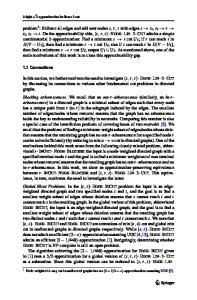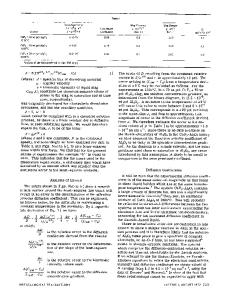A mathematical model for calculation of equilibrium solution speciations for the FeCl 3 -FeCl 2 -CuCl 2 -CuCl-HCl-NaCl-H
- PDF / 656,532 Bytes
- 7 Pages / 603.28 x 783.28 pts Page_size
- 74 Downloads / 282 Views
I.
INTRODUCTION
K N O W L E D G E of the equilibrium concentrations and activities of the chemical species in an aqueous solution is often of great value in hydrometallurgy and electrometallurgy. This is particularly true for systems with a complicated solution chemistry involving, for example, simultaneous oxidation-reduction reactions, metal-ligand complexation, and hydrolysis reactions. Solutions containing iron, copper, and chloride ion are excellent examples of commercially important systems in which the solution chemistry is of paramount importance. As part of a study of the leaching of chalcopyrite in chloride solutions, an equilibrium speciation calculation has been performed for the FeC13-FeC12-CuC12-CuC1-HC1-NaC1 system at 25 ~ This is apparently the first time that the oxidation of Cu § by Fe 3§ and the hydrolysis of Fe 3+ have been considered along with the formation of chloro complexes of Cu § Cu 2§ , Fe 2§ , and Fe 3§ Detailed knowledge of solution speciations is valuable in developing and optimizing leaching, solvent extraction, and electrolytic processes but has heretofore not been available for copper and iron chloride systems. The widespread interest in ferric and cupric chloride leaching processes and the serious problems encountered during commercialization of such processes are indicative of a need for a better fundamental understanding of the FeC13-FeC12-CuC12-CuC1HC1-NaCI system. The only previously reported equilibrium calculation for this system neglected both the redox reaction and the hydrolysis of ferric ion. l Results were given only for solutions 6M in free chloride, C1-. Relative amounts of the species of a given valence, e.g., Cu(II), were calculated. The actual concentrations of the individual species (Cu 2§ CuC1§ and CuCI~ were not calculated. At best, this approach can give only an incomplete picture of the solution chemistry.
RICHARD T. KIMURA is a Process Engineer with Mobil Oil Corporation, Ferndale, WA 98248; PETER A. HAUNSCHILD is a Senior Process Engineer with National Semiconductor, Santa Clara, CA 95051; and KNONA C. LIDDELL is an Assistant Professor, Chemical Engineering Department, Washington State University, Pullman, WA 99164-2710. Manuscript submitted April 4, 1983. METALLURGICALTRANSACTIONS B
II.
THE MODEL EQUATIONS
A mathematical model for the speciation in an aqueous solution typically consists of algebraic equations of three types: (1) a set of nonlinear mass action equations, with one equation for each independent reaction; (2) a set of linear mass balance equations, with one equation for each moiety whose concentration is conserved (e.g., total chloride) or whose concentration changes with a defined overall stoichiometry (e.g., hydrogen ion); and (3) a charge balance which expresses the fact that the solution must have no net electrical charge. A model of this type has previously been developed for the Fe2(SO4)3-FeSO4-fuSO4-H2SO4 system (2) and there are many additional examples in the geochemical literature. Twenty-three chemical species have been include
Data Loading...











